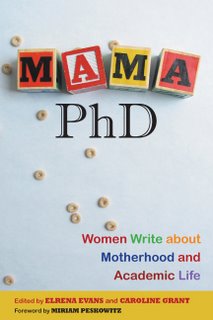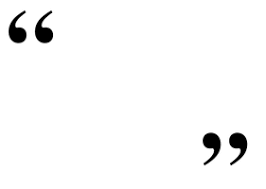 I’m way excited to introduce GWP readers to a new regular blogger, Leslie Heywood. On a personal level, I’m thrilled to have Leslie on board because she was the one who first kicked my ass into gear when I expressed a desire during graduate school to write nonacademically. She made it ok. Better yet, she published me. (Leslie, with Jennifer Drake, edited one of the very first third wave feminist anthologies, Third Wave Agenda: Being Feminist, Doing Feminism
I’m way excited to introduce GWP readers to a new regular blogger, Leslie Heywood. On a personal level, I’m thrilled to have Leslie on board because she was the one who first kicked my ass into gear when I expressed a desire during graduate school to write nonacademically. She made it ok. Better yet, she published me. (Leslie, with Jennifer Drake, edited one of the very first third wave feminist anthologies, Third Wave Agenda: Being Feminist, Doing Feminism, and I will be forever grateful to her for encouraging me down the road I am currently on!) So please join me in a warm welcome to prolific author, scholar extraordinaire, athlete,, mother of two, Leslie Heywood! Leslie’s monthly column, Gender Specs, will bring you the latest on gender analysis in evolutionary psychology and other sciences. Here’s her debut post – enjoy, and let us know what you think. -Deborah
After years of working on third wave feminism and women in sport, I got very interested in, even passionate about evolutionary approaches to language, culture, the body, and gender. From a gender perspective, however, the field is sometimes not a pretty place. It still tends to be dominated by a core set of assumptions based in a particular kind of Evolutionary Psychology (EP). It’s enough to send a good feminist screaming in the other direction away from any kind of evolutionary perspective–and in fact it often does.
But there are things about an evolutionary perspective I find very compelling, just not those things associated with this particular brand of EP. So I was very excited when a Newsweek article came out that voiced some of my concerns. On June 20, 2009, senior editor Sharon Begley wrote a feature article, “Why Do We Rape, Kill, and Sleep Around?â€, that articulates some of the main issues and problems inEP. Although is not representative of all work done in evolutionary studies, EP has nonetheless received a disproportionate share of media attention, perhaps because of the number of hoary gender chestnuts it claims to support “scientificallyâ€.
While many insiders will point out that Begley misrepresents the field of behavioral ecology, and some less reactionary forms of evolutionary psychology (see evolutionary biologist David Sloan Wilson), she questions some of the biggies that still stand in some circles, including these:
1.that rape is an adaptive strategy, because it allows men to spread their genes around more (an adaptation is anything that contributes to the evolutionary baseline of survival and reproduction)
2. that men will abuse their stepchildren because their stepchildren don’t have their genes
3. and, my personal favorite—in terms of mate choice, women prefer older men with resources, men prefer young, fertile women with no brains. Or whose brains are irrelevant to their aim, which is reproducing their genes.
It all comes down to the question of gender difference. Are there innate gender differences based in biology? Is there a “mothering instinctâ€? Do fathers want less to do with their children than mothers? Are there “male brains†and “female brainsâ€? Do men only want much younger women whose looks signal fertility, the much-cited waist-to-hip ratio of 0.7? Do women only want older men with resources? All of these assumptions make me shudder. All of these assumptions are contradicted by my experience, and though I might be an “outlier,” I think those who don’t fall smack in the middle of the Bell Curve are still important to the overall analysis about “men” and “women.”
I have never wanted an older man with resources: I wanted to make the money myself, and I prefer someone younger, and hot. I never wanted to “mother†in the sense of being the primary caretaker (although I did want children, and have them), vastly preferring the provider role, and think many men make just as effective primary caretakers as women. It’s a personality thing, and like everything else about gender, I think where a given individual falls on the spectrum occurs on a continuum between the stereotypes of femininity and masculinity. Some women make better providers, some men make better caretakers, and if the statistical aggregate tends to clump around the stereotypes, does that make everyone on the spectrum who doesn’t clump there—a large amount of people overall—mere (in the language of statistics) outliers, “noise†that ignored by the data’s interpreters?
This is an important question, because according to the U.S. Bureau of Labor Statistics, a third of working women in the United States earn more money than their husbands, and that number is increasing: 32.4 percent in 2003, up from 23.7 percent in 1987. Given that families are more and more reliant on two incomes, and that women now have more education, this upward trend should continue. According to the most recent U.S. census data, young women are more likely than men to have graduated from high school and have a college-level education, especially at the level of bachelor’s and master’s degrees. Men still get more PhDs, but the number of PhDs relative to the overall population is what a statistician would call “noise.†(In 2003, for instance, slightly more than 40,000 people in the U.S. earned a doctorate, far less than one percent of the population). But more than thirty percent of the population—women whom ostensibly chose men as life partners who make less than they do—is not statistically insignificant.
So what are some of the EP assumptions, more specifically, that I think are a problem given these statistics? These are the accounts that tend to explain all social phenomena through reference to particularly gendered aspects of physical morphology, the forms of living organisms. Perhaps the most widespread and influential is that expressed by Robert Trivers’ parental investment model (1972), which argues that there is a differential investment in parenting between sexes because of the relative reproductive investments or costs each sex makes or incurs. Human females, who face higher levels of parental investment because they have roughly 400 eggs/chances to ovulate/reproduce over the course of their lifetimes versus the virtually unlimited number of sperm and chances men have, incur much higher reproductive costs and are therefore much more “choosy†or “restrained†when making decisions about with whom they will mate. Stereotypes regarding female passivity and male activity, anyone?
Therefore, this theory claims, there is gender-differentiated mating behavior in terms of the kind of characteristics each sex seeks in long-term mates, which is where my hackles most rise. Given the asymmetry in parental investment of the two sexes, females prefer older men with economic resources for long-term mates, whereas men prefer younger women who exhibit the signs of maximum fertility and health, signs linked to things like youth, breast size, waist-to-hip ratio, neotonous features such as big eyes and full lips. As evolutionary consumption researcher Gad Saad puts it, “two universal and robust findings are that men place a greater premium on youth and beauty whereas women place greater importance on social status and ability to acquire, retain, and share resources. The reason for this pervasive sex difference is that mating preferences cater to sex-specific evolutionary problems†(The Evolutionary Bases of Consumption, 63).
Oh, those sex-specifics. They will get you into trouble every time. What do we do with gender difference if it leads us to this particular place? What different accounts of difference might we raise?
-Leslie Heywood

 Last week National Academies Press released findings from a
Last week National Academies Press released findings from a  The deadline to propose panels for the
The deadline to propose panels for the  Hello again, Girl w/Penners! I’ve been sequestering myself this fall as I finish work on a book of my own but I am very glad to jump back into getting the word out about some of the amazing new books that explore the realities of contemporary women’s lives.
Hello again, Girl w/Penners! I’ve been sequestering myself this fall as I finish work on a book of my own but I am very glad to jump back into getting the word out about some of the amazing new books that explore the realities of contemporary women’s lives. Pssst…please pass it on!
Pssst…please pass it on! At the gracious invitation of the wonderful and savvy Renee Cramer (see her prescient GWP post,
At the gracious invitation of the wonderful and savvy Renee Cramer (see her prescient GWP post, 


